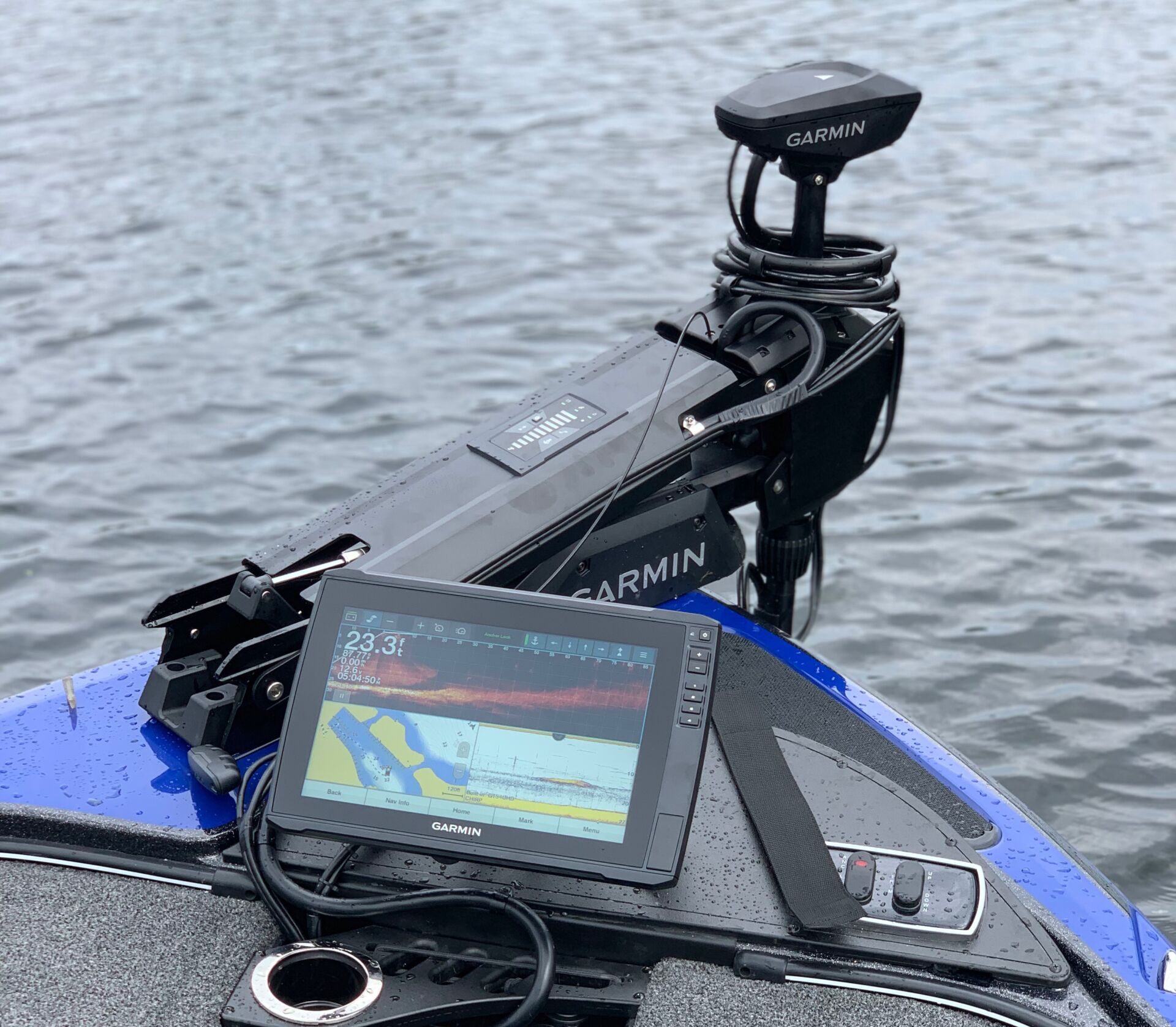Presented by Garmin
We often get the question; “where should we mount our transducer on our boat? Should it be on the transom or should it be on the bow-mounted trolling motor?”
This is a question that can have multiple answers. Hopefully, the following will help.
ONE BOAT, ONE FISHFINDER, ONE TRANSDUCER
If you only have one fishfinder on your boat, then transducer placement becomes a matter of what type of fishing you mostly do.
If you mostly troll for let’s say Trout, Salmon, Walleye, Muskie etc., then the absolute best transducer placement is off of the transom. With this positioning, you will be able to keep track of the bottom features as well as fish and bait 100 percent of your fishing time (transducer is always in the water).
This also gives you a view of either under your seated position if you are running a tiller handle motor, or below and slightly behind you if you are seated at a steering console. Either way, this is your best positioning. By the way, this is also a great transducer position for drifting, casting etc. from the back or console area in that same style of boat.
If you are a Bass, Pike, Muskie or even at times a Walleye angler that mostly casts from the bow of your boat, then mounting your transducer onto your bow-mounted trolling motor is your best bet. This ensures that the angler will again (as in the above scenario) be positioned close to directly above the transducer.
WHY THESE POSITIONS?
The answer here is obvious, however, we will give you our explanation. If you are fishing from the bow of an 18’ boat, as an example, and your transducer is mounted on the transom, essentially you will be fishing around 15’ in front of your transducer’s position.
If you were jigging for Walleye in 15 feet of water and the fishfinder was reading fish directly below the boat, there will be times that you will cast out or drop down, and be nowhere near the fish. The idea is to be directly above the fish in this scenario and the only effective way of achieving this is to mount the transducer on the bow-mounted trolling motor.
A point that can be made for the above scenario where the transducer is mounted on the transom as you’re fishing from the bow is knowing the transducer position. An angler can cast toward the back of the boat… it’s a bit of a pain, trust us. They can also physically move toward the back of the boat… but then, who’s controlling the electric motor?
ONE BOAT, TWO FISHFINDERS, TWO TRANSDUCERS
This is more like the common setup for today’s fishing boats. Anglers can pretty much get every type of fishing scenario taken care of with two fishfinders. The reason being is they can set their rig up in both the scenarios as above.
Fishfinder #1 is mounted at the driver’s position of the boat (tiller, console etc.). The transducer dedicated to this fishfinder is mounted off of the transom of the boat. Now the trolling, drifting etc. (and general navigating) is taken care of by this transducer.
A high-speed traditional, a Clear and Side Vu, and a Panoptix transducer all mounted on the transom of this aluminum fishing boat.
Fishfinder #2 is mounted at the bow position of the boat. This transducer is mounted to the bow-mounted trolling motor and is dedicated to the corresponding bow-mounted fishfinder. Again, you’re seeing things at your fishing position.
When fishing off the bow of the boat with the trolling motor deployed, a bow-mounted transducer is pretty much a must.
Companies like Garmin have taken things a step further. Now, with the addition of network cables, anglers can connect the fishfinders on a boat to “talk” to each other. This way, if there were ever a need to look at the opposite transducer (bow position fishing to transom transducer or drivers position to trolling motor transducer), it can be done through the menu in the fishfinder. This is not a normal procedure but we have done it on occasion.
Another point is that many trolling motors nowadays have a built-in transducer (e.g. the Garmin Force has a GT54 mounted directly under the motor housing). This means that if you are running only a driver’s position fishfinder, and that finder allows networking, you can choose between transducers.
This comes in handy when a helm positioned fishfinder is mounted on some kind of swivel mount where an angler can literally turn the fishfinder to face the front of the boat. Although the angler has to constantly turn their head back to see the screen, it still can be an effective way to keep costs down to only one fishfinder. This is a great temporary fix until you can afford a second fishfinder for the bow.
The above points work with all signals from various transducers like traditional, ClearVu, SideVu and Panoptix, however, the most popular is the traditional mode.
When using SideVu, as an example, some anglers prefer a fixed position (transom) vs. on a swivelling trolling motor. On the other hand, LiveScope works best with the swivelling motorhead of a trolling motor (we’ll save these scenarios for another article).
CONCLUSION
There is literally so much that could be said and/or written about transducer placement. Hopefully, this gave you a bit of insight. We’ll be sure to write follow-ups at a later date, stay tuned.






